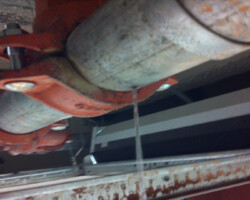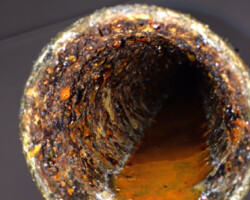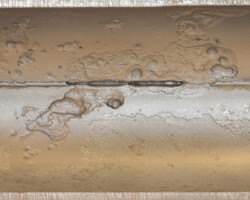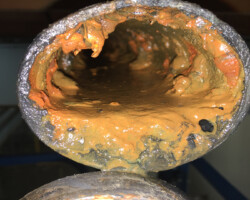Common Fire Sprinkler System Problems and How to Address Them
How Does A Fire Sprinkler System Work?: Exploring the Technology that Saves Lives
July 29, 2024Common Issues Found During Fire Alarm Inspections
October 30, 2024Maintaining the integrity and reliability of your fire sprinkler system is essential for keeping your property safe. Fire sprinkler systems are complex networks that require regular inspections, testing, and timely repairs to function optimally. In alignment with NFPA 25, the Standard for the Inspection, Testing, and Maintenance of Water-Based Fire Protection Systems, identifying and correcting deficiencies is critical to ensuring that these systems are ready to perform when needed.
Here are some of the most common fire sprinkler system problems and how they can be addressed effectively.
1. Corrosion in Fire Sprinkler Pipes
Over time, fire sprinkler pipes can suffer from internal corrosion, which weakens their structural integrity and can lead to obstructions. This can result in a system that fails to deliver water during a fire emergency.
Solution: Regular inspections, including the NFPA 25-mandated 5-year internal pipe inspections, are essential to detect corrosion early. If corrosion is detected, professional cleaning or pipe replacement is necessary to ensure the system remains functional. Licensed fire protection contractors should perform these repairs to ensure compliance with local codes and standards.
2. Obstructions in the System
Obstructions, such as mineral deposits, foreign materials, or accumulated debris, can severely impact water flow in fire sprinkler systems. This is particularly common in older systems that have not been maintained regularly.
Solution: Regular flow tests and internal inspections help to identify obstructions. A licensed contractor can flush the system to remove blockages and restore water flow. Keeping records of these inspections and maintenance actions is essential for both compliance and operational safety.
3. Mechanical Failures
Sprinkler heads, valves, and other mechanical components can degrade due to wear and tear or exposure to environmental factors. Common mechanical issues include leaks, misaligned sprinkler heads, and valve failures.
Solution: Routine visual inspections and functional testing, as required by NFPA 25, can help detect these issues before they lead to system failure. Repairing or replacing faulty components should always be handled by certified professionals. For example, leaky pipes or malfunctioning valves can often be replaced without a full system overhaul, ensuring minimal disruption to your operations.
4. Inadequate Water Pressure
Water pressure is critical to the effectiveness of a fire sprinkler system. If pressure is too low, the system may not be able to control a fire effectively, while excessive pressure can damage the system components.
Solution: Pressure gauges should be monitored regularly, and fire pump tests should be conducted to verify that the system maintains the proper pressure. If discrepancies are found, adjustments should be made, and a licensed fire protection contractor should be called to ensure the system meets the required standards.
5. Neglected System Maintenance
A system that is not regularly inspected or maintained is prone to unexpected failures. This can result from skipped inspections, outdated components, or lack of compliance with fire codes.
Solution: NFPA 25 sets forth specific intervals for testing, inspecting, and maintaining fire sprinkler systems. Adhering to this schedule ensures that the system remains compliant and operational. Building owners should partner with reputable fire sprinkler contractors to perform regular inspections, testing, and repairs.
For businesses in Seattle and surrounding areas, maintaining a fully operational fire sprinkler system is not only a legal requirement but a critical component of your overall fire protection strategy. Addressing issues such as corrosion, obstructions, and mechanical failures promptly can prevent system impairments and reduce the risk of catastrophic fire damage. Always consult with a licensed fire protection contractor to handle repairs and ensure that your system complies with NFPA 25 and local fire codes.
Need to address an issue in your fire sprinkler system? Contact Columbia Fire today to schedule an inspection and ensure your fire protection system is in top shape.













